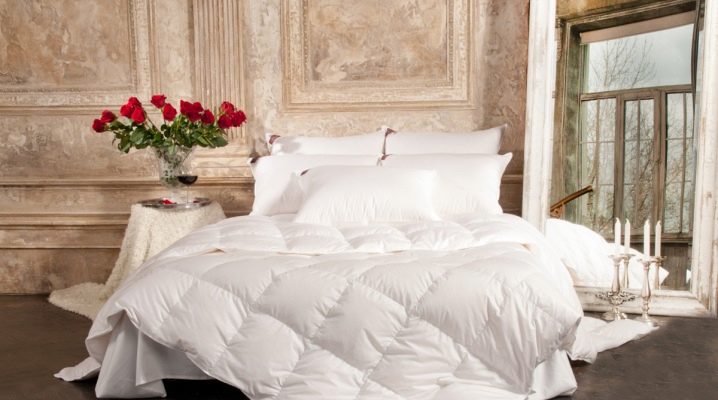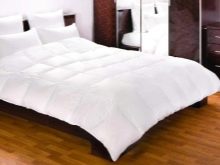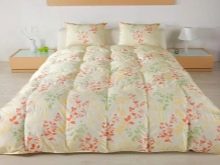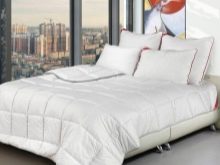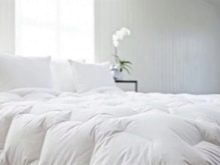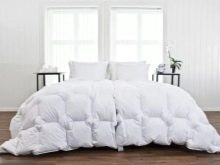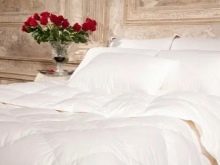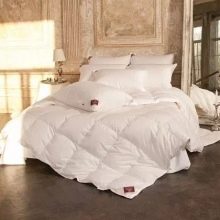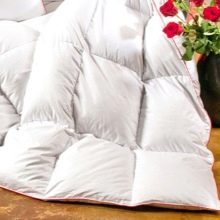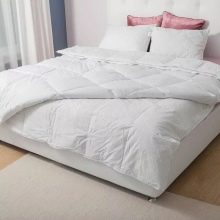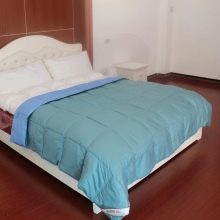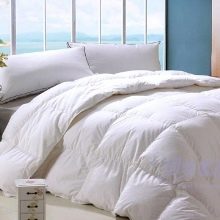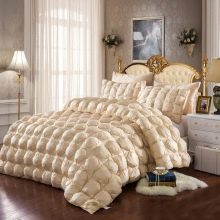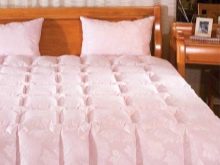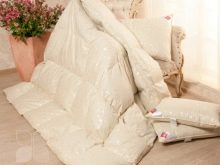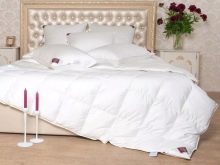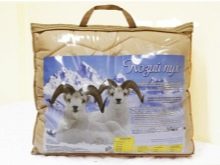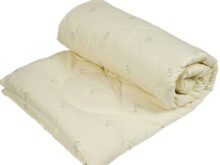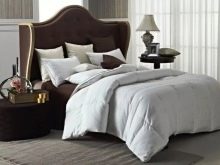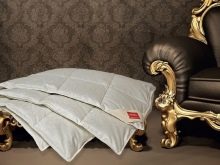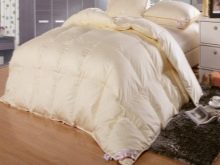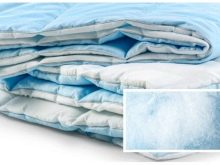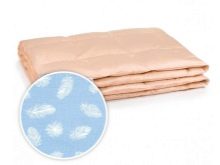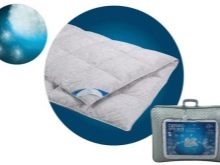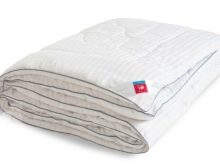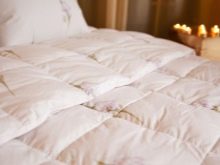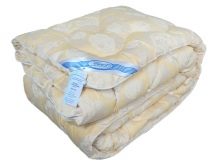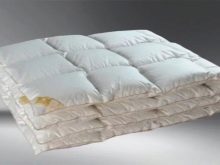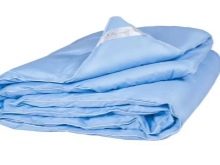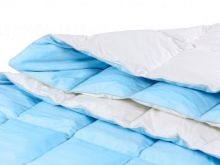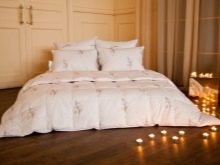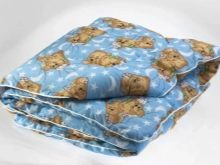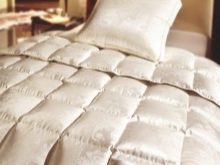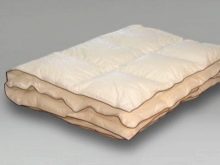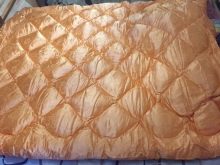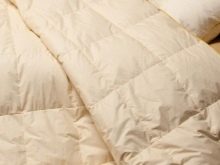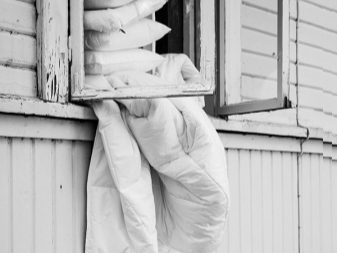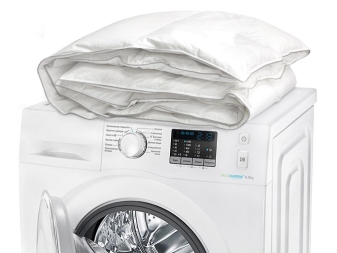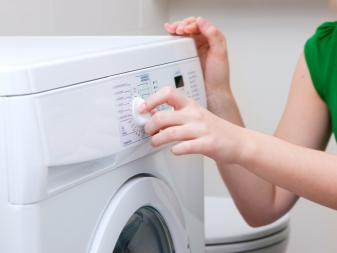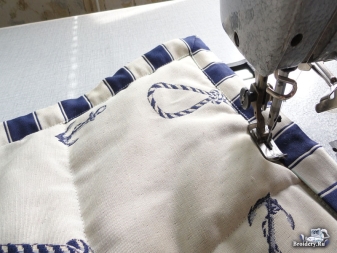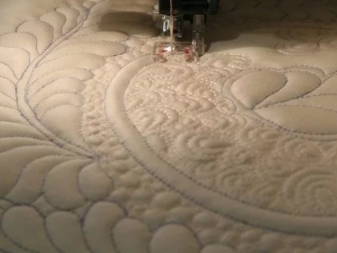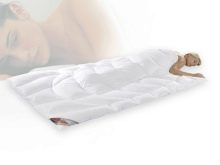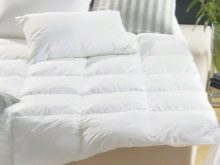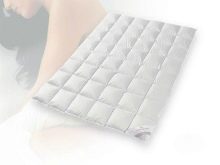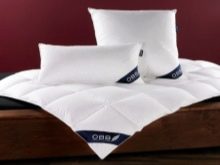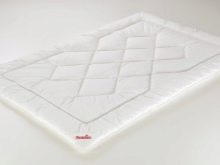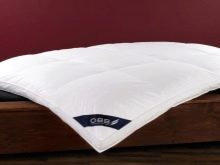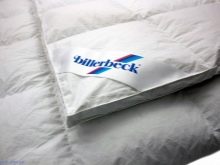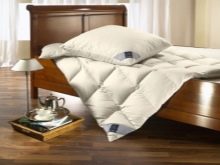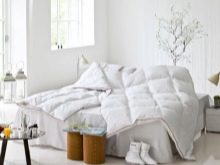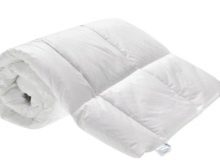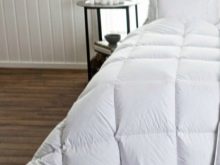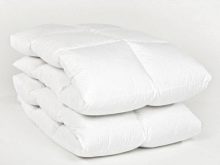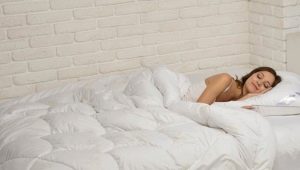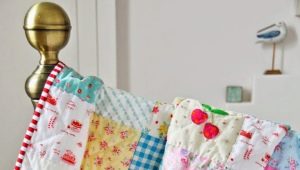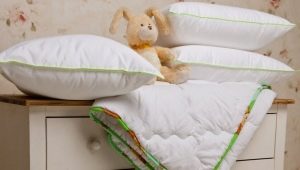Duvet blanked
Down comforters are in demand and do not go out of fashion for a long time. Due to their remarkable warming qualities, convenience and practicality, products made of down are deservedly popular.
Advantages and disadvantages
Down-filled quilts are endowed with the following unique qualities:
- lightness and softness of products, due to the natural properties of fluff. The weight of a half-and-half product made of goose down is no more than 1 kg, and, for example, a premium model filled with down eider and measuring 135x200 cm has a weight of only 500 g;
- long service life. With proper and timely care, a blanket of fluff can last for 20 years;
- excellent ventilation. The structure of the fluff promotes continuous air exchange, so that the blankets "breathe";
- ability to thermoregulate. Fluff creates a favorable and comfortable temperature for a person,warming in the cold and not allowing the body to overheat in the heat;
- elasticity. The original lush look and volume of the product are retained for a long time.
Despite the large number of advantages, down comforters have several disadvantages:
- high cost of products. The high cost of products justifies a long service life and high performance. The price range of models is from 3 to 300 thousand rubles.
- care. Duvets require careful attention and need regular and thorough care;
- allergic reactions to down are possible. This applies to budget models. In expensive models, the filler is preliminarily subjected to high-temperature and antimicrobial treatment using a special Sanitized tool. After that, the product receives certificates of conformity "Nomite", "Daunasan" and "OekoTex - 100 Standard", guaranteeing the absence of fungus and mold and allowing the use of blankets for people suffering from bronchial asthma and allergic reactions. Insects in the treated fillers also do not live.
What fluff choose?
Blankets are made of waterfowl and goat down fluff:
- duck down The most cheap and short-lived filler.It is subject to rapid stalling, clumping and poor evaporation of moisture. The feathers have a hard spine, because of which the weight of the product increases markedly;
- goose down The most common type of filler used in production. It has an optimal price-quality ratio. It is collected in most cases from live birds that have reached six months of age 2-3 times a year. Used down of geese gray and white breeds. For the entire life cycle, one individual gives 4 kg of the down-feather mass, where the proportion of down is only 25%.
The north the bird lives, the better and more expensive the collected raw materials.
- major producers use in the production of down birdsliving in the free-range and receiving special oatmeal food. Goose down absorbs moisture, but evaporates it better than duck. Widely used for the production of pillows, blankets, sleeping bags. But as a sleeping bag, it is suitable only for winter use or operation in places with moderate humidity;
- goat down This undercoat is collected from the chest and lower neck of goats. The fibers are thin and long. Down has high elasticity and is capable of thermoregulation.Perfectly evaporates absorbed moisture, creates the effect of dry heat, useful in case of rheumatism and pain in the joints, and due to the content of lanolin helps to quickly alleviate the condition;
- Pooh northern duck eider. The most expensive and high quality. Gaga live only in the wild, so the fluff is collected directly from the nests: it is replaced with soft hay. 2.5 tons of it is mined per year, therefore products with such filling cost several thousand euros.
The quality of down is determined by the volume of fluffs. There are three quality classes: global, European and Swiss. The volume of the latter is 4 times higher than that of world-class products. The degree of elasticity is measured by Fill power, abbreviated F. P. For the manufacture of blankets elastic index can not be less than 500 units. The number of feathers is denoted by fractions, which indicate the ratio of down and feather in percent, respectively.
In the most high-quality fillers, the ratio of down-feather - 95/5.
Selection by season
The use of various amounts of fluff in the blankets allows you to produce four types of models according to their thermal index:
- very light. The quality of heat corresponds to a light blanket.Denoted by one sign - Q;
- lung. Suitable for cool summer nights, will not allow overheating of the body and will create a comfortable temperature. Tagged as QQ;
- the average - QQQ. Universal type of blanket with excellent thermostatic properties. Under such a product is never hot or cold;
- warm - QQQQ. The highest rate will ensure a comfortable sleep at low room temperatures or in the fresh air while going out into the countryside.
Classification
Down patterns on the type of stitches are divided into 2 categories:
- plain stitch it can be straight or figured, well suited for light blankets. But in thick products it is not very practical - the down is unevenly distributed, there are empty areas, and as a result, the thermostatic properties of the down are reduced. Numerous lines make the product heavier, and over time, down begins to break out;
- cassette. It is used for blankets with a thermal indicator QQ-QQQQ, creates a uniform layer of fluff without empty zones. The blanket of this type stitches consists of internal cells-cassettes, separated from each other by internal partitions. This prevents the fluff from migrating inside the case and, therefore, prevents churning and clumping of the filler.
Choose size
The width of the product is chosen by the consumer at its discretion, but the length should be equal to the length of the bed. Russian sizes are different from common European ones, therefore, below are both options:
- children's models - 110x140 cm, the European standard - 120x120.
- single blankets available in sizes 140x205 cm and 155x215 cm, respectively;
- double - 172x205 and Euro size - 200x220 cm. Sizes of 200x200 m and 220x240 are also produced, but they are less common.
Cover material
The coating must be durable, hypoallergenic, ventilated and hygroscopic.
The following materials are commonly used:
- organic cottonhaving OekoTex Standart 100-standard, which guarantees the absence of harmful impurities;
- silk, satin or jacquard - beautiful and pleasant to the touch materials used in expensive models. A satin blanket, dressed in a blanket cover made of silky flax with embroidery, will not only warm and ensure a comfortable sleep, but also decorate a sleeping place.
- tensel This material is made from eucalyptus wood fibers and is ionized with silver;
- liosilkconsisting of tencel and silk and combining the positive qualities of both materials.
Care
Duvets need constant time-consuming care. But the fulfillment of storage conditions, rules of operation and maintenance will significantly extend the service life of products:
- regular airing. Downy filler tends to absorb moisture well, the evaporation of which is much slower than absorption. Therefore, the blanket should be dried in a darkened dry place and during use, and after long storage;
- machine wash and clean. If you can not use the services of dry cleaning, which would be preferable, you can wash the product at home. But this can be done only if there are signs on the label permitting machine washing, which should be done in the summer dry season. This will allow to dry the blanket well.
You must first soak the blanket for 15 minutes in warm water with the addition of a few tablespoons of vinegar. This will help eliminate unpleasant odor. For washing, use only liquid products and a delicate mode.
- to avoid lumping the fluffIt is recommended to put a few balls for tennis in the car drum. Automatic spinning should not be used.Rinse the product in several waters, then gently squeeze the blanket by hand and place it on a horizontal surface, periodically shaking and turning it over;
- repair and restoration. In order to correctly change the napernik of a duvet, you need to do the following: spread out the blanket on a large table or on the floor. Evenly distribute the fluff through the old case and prometat the top of the old napernik with English pins from the center into each corner. Then quilting by hand as planned, alternately splitting off pins. Then take a pre-cut one part of the future of the new cover and tack it on the upper side of the blanket. Do the same with the second workpiece. After that, draw lines on the fabric on the fabric and start quilting manually. The last are joined sides and bottom. The final step will be flashing on the machine and edging around the perimeter. But it is necessary to take into account that the machine should be of professional class, the usual one can not cope, especially if there is a lot of pen in the filler.
Blanks need to be done more than a blanket, because the fabric is taken when stitching.
Top manufacturers
The most reliable manufacturers of duvets that have earned world fame in the sleep goods market are following companies:
- company from Austria Kauffmann produces high-quality fluff blankets with a premium hypoallergenic filler and a Nomite certificate. In production, goose and eider down is used, the coating materials are cotton, cotton and silk. Adult and children's models are presented, as well as special products for people with various deviations in health;
- Swiss Christian Fischbacher produces light, soft and fluffy models of the elite class;
- OBB from Germany produces blankets using the Canadian northern goose down, which has excellent thermostatic properties and is the raw material of the Swiss (highest) quality category;
- German Paradies - the largest European manufacturer, creating a collection of environmentally safe, modern bedding, which have an interesting design and a high level of comfort;
- Quilts of Denmark A / S and Risen Dun from Denmark is a manufacturer of certified products for people suffering from bronchial asthma and allergies;
- Dorbena - a company from Liechtenstein, is engaged in the production of blankets from down of a goose grown on an oatmeal diet, which is distinguished by the absence of spines in the feathers, their large size, and, as a result, large volume. The down is washed 5 times with soap, then rinsed with water from mountain springs, and at the final stage it is treated with steam, which is supplied with a temperature of 130 degrees, due to which it is completely decontaminated;
- Billerbeck - German company, which attracts to create their products scientists, engineers and doctors. As a result, a unique collection of blankets was developed, the creation of which took into account all the features of the human body;
- Norsk Dun - a company from Norway, producing luxury bedding. Uses the French and Italian raw materials of the European standard, since the development of which has not passed 7 days. This ensures the highest performance products;
- Finnish Joutsen Finland Oy is engaged in the release of blankets from the down of the white Arctic goose, which are completely hypoallergenic and suitable for self-washing in the machine. Models from Finland have the certificate of standard EN 12 934, which guarantees 100% down filling;
- Shvecoff. ru Russia. Ivanovo factory, producing blankets of goat fluff.All products are completely harmless to allergy sufferers and are significantly cheaper than their Western counterparts, not inferior to them in quality and possessing excellent performance characteristics.
Warm, voluminous and very light blankets are deservedly popular. A chic design, a large range and a wide price range will allow you to choose a product even for the most demanding customer.
See a review of the duvet in the next video.
